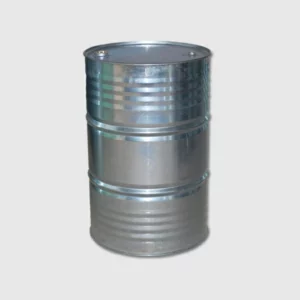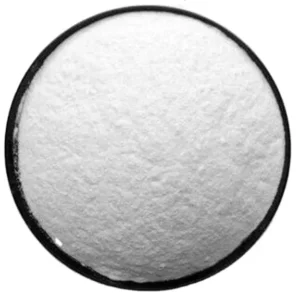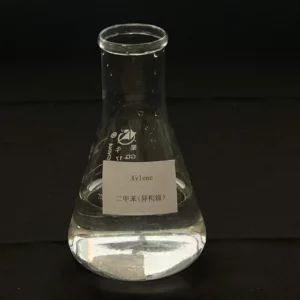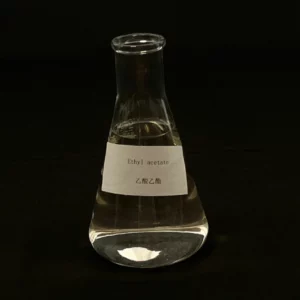Polyvinyl Chloride (abbreviated as PVC) is a common synthetic plastic produced by polymerization of vinyl chloride monomers. It is one of the most widely used plastics in the world, with good mechanical properties, electrical insulation properties and chemical resistance.
Product Parameter
| Synonyms |
PVC, vinyl |
| Chemical Formula |
(C2H3Cl)n |
CAS Number |
9002-86-2 |
| Molar mass |
|
EINECS |
208-750-2 |
| PROPERTIES |
| Appearance |
free-flowing powder |
| Original Color |
white |
| Odor/Taste |
odorless |
| Solubility |
Insoluble |
| Melting Point |
Decomposes above 250°C |
| Boiling Point |
Decomposes above 250°C |
| Specific Gravity |
1.4±0.02 |
| Solubility Value |
Not applicable. |
| Percent |
99-100% |
| Handling Precautions |
Store at ambient temperature. Avoid breathing dust. Avoid getting in eyes or on skin. Wash th oroughly after handling.
Store in a dry place away from direct sunlight, heat and incompatible materials. Reseal containers immediately after use.
Store away from food and beverages. |
| Stability |
Stable |
| Hazardous Decomp Products |
Hydrogen Chloride, carbon monoxide, carbon dioxide
and small amounts of benzene and aromatic and aliphatic hydrocarbons. |
| Conditions to Avoid |
Excessive temperatures, contact with strong oxidizers, contact with acetal or acetal copolymers,
and contact with amine containing materials during processing (at processing conditions,
these materials are mutually destructive and involve rapid degradation). |
| HAZARDS IDENTIFICATION |
| Emergency Overview |
Follow safe industrial hygiene practices and always wear protective equipment when handling this compound. |
| Potential Health Effects |
Irritating to the skin and eyes on contact. Inhalation will cause irritation to the lungs and mucous membrane.
Irritation to the eyes will cause watering and redness.
Reddening, scaling, and itching are characteristics of skin inflammation. |
| FIRST AID MEASURES |
| Inhalation |
Remove to fresh air. If not breathing, give artificial respiration.
If breathing is difficult, give oxygen. Call a physician. |
| Skin Contact |
Flush skin with water. Wash clothing before reuse. Call a physician if irritation occurs. |
| Eye Contact |
Immediately flush eyes with plenty of water for at least 15 minutes. Call a physician. |
| Ingestion Contact |
If swallowed, call a physician immediately. |
| FIRE FIGHTING MEASURES |
| Extinguishing Media |
Water spray. |
| Special Fire Fighting Procedures |
Do not direct a solid stream of water or foam into burning molten material;
this may cause spattering and spread the fire. |
| Fire and Explosion Hazzards |
No information found. |
| Hazardous Combustion Products |
Emits toxic fumes under fire conditions |
| Proteure in Fire |
Wear self-contained breathing apparatus and protective clothing to prevent contact with skin and eyes. |
| ACCIDENTAL RELEASE MEASURES |
| Personal Precaution in Spill |
Utilize recommended protective clothing and equipment. |
| Environment |
Collect wash water for approved disposal. Keep from entering water or ground water. |
| Spill Clean Up |
Clean spills in a manner that does not disperse dust into the air. Spill area can be washed with water. |
| PERSONAL PROTECTION |
| Protective Equipment |
Use local ventilation if dusting is a problem, to maintain air levels below the recommended exposure limit. |
| Process Conditions |
OSHA PEL: 0.5 ppm. ACGIH TLV: 10mg/m3 |
| Respirators |
Work ambient concentrations should be monitored and if the recommended exposure limit is exceeded,
a NIOSH/MSHA approved dust respirator must be worn. |
| Protective Gloves |
Wear PVC gloves. |
| Eye Protection |
Wear safety glasses or goggles. Emergency showers and eye wash stations should be available. |
| Other Protection |
Wear impervious boots and apron or coveralls. |
| Hygienic Work Practices |
Educate and train employees in the safe use and handling of hazardous chemicals.
Employees should wash their hands and face before eating, drinking or using tobacco products. |
| TOXICOLOGICAL INFOMATION |
| Toxicological Info |
Routes of entry: skin contact, inhalation, eye contact, and ingestion. |
| Inhalation |
Vinyl resin has little effect on the lungs and is not known to cause any disease when dust exposure is minimized.
Routine inhalation of dust of any kind should be avoided. |
| Medical Symptoms |
No adverse health effects are anticipated from this product at ambient temperature. |
Application
1. Building materials: PVC can be made into pipes, window frames, floors, roof membranes and other building materials. Its corrosion resistance, weather resistance and mechanical strength make it an ideal building material for use in water supply, drainage systems and exterior wall decoration of buildings.
2. Packaging materials: PVC can be processed into various packaging products by extrusion or injection molding, such as bottles, bags, films, etc. Because of its good weather resistance, chemical resistance and excellent barrier properties, it has been widely used in food packaging, pharmaceutical packaging and daily necessities packaging.
3. Wire and cable: PVC has good electrical insulation properties, making it the main material in the wire and cable industry. It is widely used in the manufacture of low voltage cables, communication wires, power cables and so on.
4. Automotive field: PVC can be made into automotive interior parts and external decorative parts, such as body panels, instrument panels, seat covers, etc. Chemical polyvinyl Chloride has wear resistance, temperature resistance, UV resistance and other properties, suitable for use in automotive environment.
5. Medical devices: Due to the good biocompatibility and chemical resistance of PVC, it is widely used in the manufacture of medical devices, such as infusion tubes, blood transfusion bags, catheters, surgical instruments, etc.
6. Other applications: PVC can also be used to make furniture, floor MATS, toys, pipe joints and other consumer and industrial products.
Multiple uses of products

-1024x576.jpg)
.jpg)
It use in Construction Industry,Plumbing and Piping Industry,Electrical Industry,Packaging Industry,Medical and Healthcare Industry,Textile Industry,Footwear Industry,Roofing and Waterproofing Industry,Greenhouse and Agriculture Industry

-1024x576.jpg)
.jpg)


.webp)
.webp)



